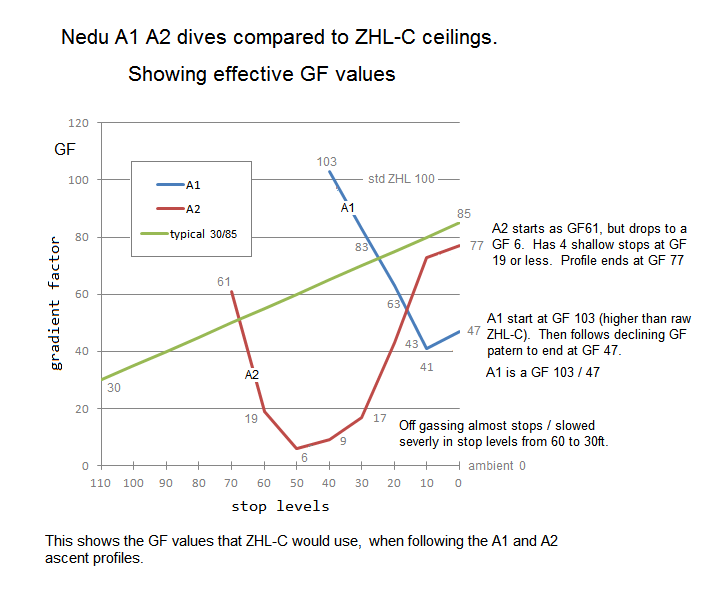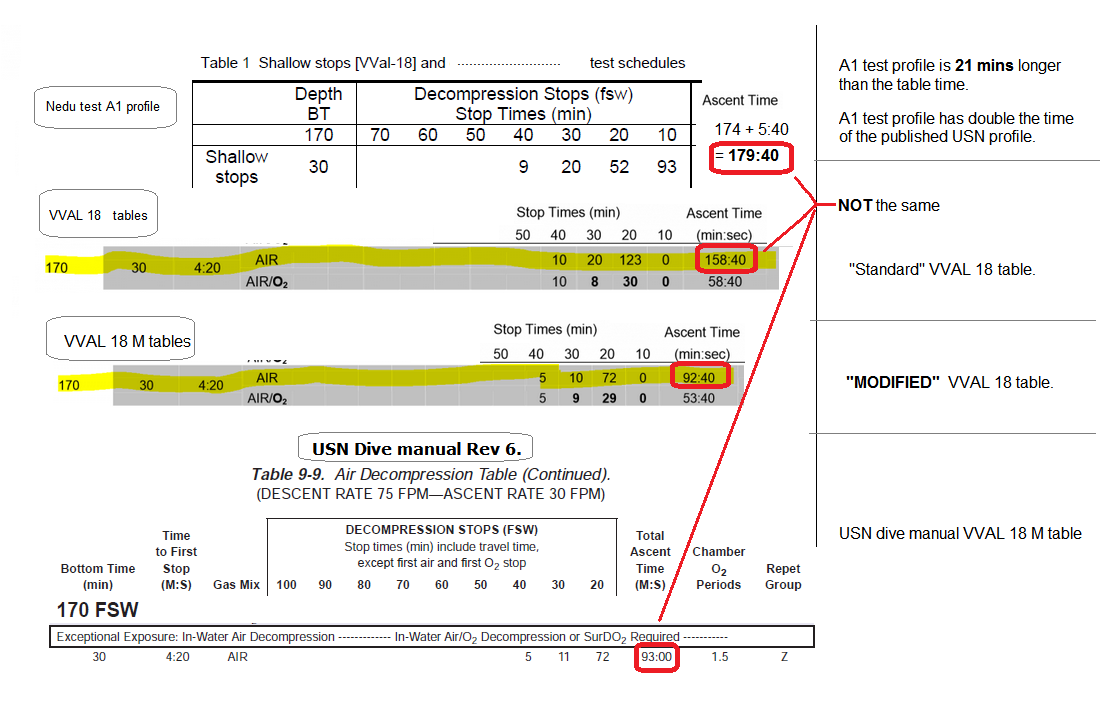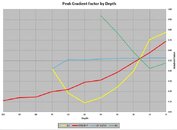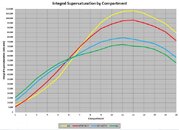Finally, if you are asking me whether there is benefit in a middle ground in which some short deep stops are conducted early, and compensated later in the ascent by increased shallow stops to offset increased gas uptake by slow tissues I would have to say that I don't have a definitive answer to that. I doubt it (for the reasons articulated in the paragraph beginning "You say..above), but it has never been tested. But let's not lose perspective on the debate, which has been about deep stops as imposed by bubble models, and the promise of bubble models (at least initially) was that they could produce more efficient (and therefore shorter) decompression because of the deep stops, and that you could even shorten your shallow stops as a result. I really do think that notion is discredited.
Simon M
Simon, thanks again for sticking with me on this. I guess when we peal away all the layers, what's at the core of this to me is the definition of a deep stop.
The study seems to be wanting to address the utility of deep stops but when you look at it from the paradigm I'm used to -- namely the paradigm that has been firmly stamped into my DNA as a diver that you need to curve the ascent -- the profile they used doesn't have anything that I can recognise as a deep stop. It has what I would recognise as a number of multi level stages but no deep stops in the sense that we're used to seeing.
That's where I can't get the gears that I'm used to working with to mesh with the gears they're using... so I just can't put the profile in a context I understand.
I think, given the large body of deco theory we already have that says you need to curve the ascent, that it's valid to question whether or not a stop can be so long that it is no longer a stop but a new stage. I think this is what Tom was trying to say too when he said you can do "too much deco".
The point can be illustrated by simply calculating the average depths for those two profiles. The average depth of the Haldane profile works out to about 39 feet. The average depth for the BVM3 profile works out to about 50 feet. If you use something like the PADI RDP to look at the NDL's for dives to 30, 40 and 50 feet then you can see that there is a dramatic drop in the NDL over this short distance. On a 200 minute dive, the average depth of the BVM3 profile is so deep that it seems logical to me that it would result in higher levels of DCS and perhaps even a little surprising that the incidence of DCS wasn't higher than it was.
Another way of looking at this to see what mainstream software says about it. On nominal, Vplanner suggests that the BVM3 divers skipped about 25 minutes of deco for this profile while the study's Haldane divers skipped none. Therefore, what's bothering me, and what has BEEN bothering me from the beginning is that I *think* (and again I'm not a scientist) ... but I *THINK* the study has been confounded by the average depth of the BVM3 profile being too deep.... I *THINK* what may *actually* be happening is related to the average depth and not the deep stops. In other words, I really have the impression that it's possible that the researchers saw deep stops as being the culprit because they *expected* it and as a result failed to look for other explanations (like average depth).
I'm just saying what I'm seeing. I'm not arguing that I must be right about this, I'm observing that there is an alternative explanation for the increased incidence of DCS in this study. And again, I'm just another diver so take all this with a grain of salt. I'm uncomfortable as it is questioning the big guns like this and taking up so much air-time in this thread, but I think it's important to view it from all angles.... don't you?
Having said all that, I firmly side with Simon on his analysis that deep stops do NOT justify shortening shallow stops. If anything else (using the avg depth idea) deep stops would argue in favour of extending shallow stops. Ever since Mark Ellyatt just about died from using Weinke's algorithm on a 250 metre dive in 2003, technical divers have had some (more than) nagging doubts about shortening shallow stops because of having done deep stops and I think Simon is absolutely on the mark when he says that this idea has been debunked. More research will strengthen this but I'm happy to take that result at face value right now.
@divetech99, I hope this sort of answers the question you asked me. I guess if It were me that I might have picked profiles that leave the average depth of both dives within the generally accepted NDL's for the run time so that there could be no question of whether or not the average depth was confounding the results. Not being a scientist I guess I'll have to defer to smarter people than me to design an experiment that makes sense, though.
R..
---------- Post added December 26th, 2015 at 12:47 PM ----------
But what if by letting the model free, it would generate a deco profile with a DCS probability of 0.1% (making up numbers) and when forced to use 174 minutes, the best of all the possible profiles would be 1%? It was forced to generate something worse, even if it was the best of the bad ones.
This is exactly what's been nagging at me but I was unable to describe it nearly as well as you did. Thanks.









